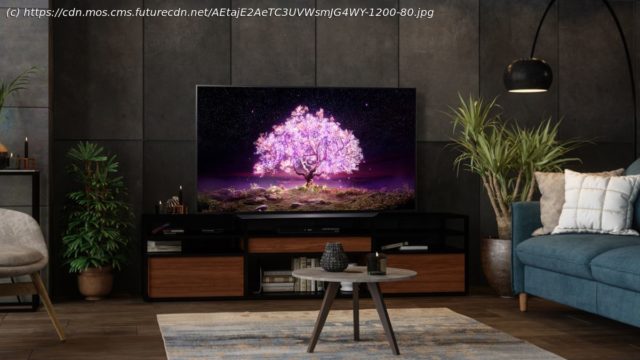Barring a few minor issues, the LG C1 OLED is definitively one of the best TVs we’re going to see in 2021.
The LG C1 OLED is the follow up to TechRadar’s best TV of 2020, the LG CX OLED. You can understand, then, why our expectations for the C1 OLED were immense – and yet, it has managed to deliver on all of them. That’s because LG has made a number of small tweaks to last year’s model. It’s now using LG’s Alpha a9 Gen.4 processor for better upscaling and virtual surround sound audio, and with four separate HDMI 2.1 ports, it’s ready for the PS5, Xbox Series X, Xbox Series S, and whatever next-gen consoles can throw at it. Gamers will also appreciate the new Game Optimiser menu that gives you the option to quickly adjust brightness, contrast and VRR on the fly. As with the previous model, you’ll find support for both Google Assistant and Amazon’s Alexa, who can be summoned using buttons on your remote, and a near-complete repository of streaming services that includes Netflix, Hulu, Disney Plus, Amazon Prime Video and many more. The LG C1 isn’t flawless, as we did encounter issues around how the new Alpha a9 Gen.4 upscales faces, and how reflective the all-glass screen is in the daylight, but the issues are few and far between. There are, of course, higher resolution TVs out there right now like the LG Z1 OLED, which offers 8K resolution, and the new LG G1 Gallery Series that uses the coveted OLED evo panels that offer better brightness. However, we feel that the LG C1 OLED offers the best blend of price and performance and should be high up on your list for potential TVs to buy in 2021 and beyond. The LG C1 OLED is part of the LG 2021 TV lineup that includes the new LG A1 OLED, LG G1 OLED and LG Z1 OLED, as well as the new QNED TVs like the QNED99, QNED95, QNED90 and QNED85. The LG C1 is the cheapest OLED in the lineup that uses the new Alpha a9 Gen.4 processor (the A1 OLED will be cheaper but uses the a7 processor), however it’s still not exactly what we’d consider cheap: US pricing and release date UK pricing and release date Australia pricing and release date If you compare those prices to last year, the LG C1 OLED costs the exact same as the LG CX OLED cost when it first came out last year, though you can now find the latter at a bit of a discount now that the LG C1 is hitting store shelves. Because there’s not a significant difference between the two other than the processor, it’s probably worth picking up last year’s model at a steep discount if you can find one. It makes sense that last year’s TV is now cheaper, but how does the C1 OLED’s price compare to other OLED TVs? Compared to the new Sony A80J OLED that costs $2,799 for the 65-inch version, the C1 OLED is a bit cheaper for US buyers, but UK buyers will be paying £4,199 for the 65-inch Sony A80J so the £2,499 C1 OLED is a steal in comparison. There are cheaper alternatives, however, like the Vizio OLED TV that starts at just $1,199 for a 55-inch model or the Panasonic HZ980 that costs just £1,098 from Currys. There are some drawbacks to both those TVs (starting with the lack of HDMI 2.1 ports) but they are cheaper and provide similarly deep black levels. It can feel silly to talk about how a TV looks on the outside – it’s the picture that matters most, after all – but you can’t ignore how nice the LG C1 OLED is design-wise. The front of the TV is pure minimalism – there’s a long silver stand that holds the TV upright and only a millimeter or two between the picture and the edge of the display. If you were to mount it, pretty much all you’d see is the screen, but putting it on its (quite hefty) stand still looks great. That extra heft prevents the TV from wobbling and gives the C1 a low center of gravity. Spin the TV around to the side and you’ll see the razor-thin OLED screen; it’s thinner than your smartphone and it looks a lot nicer, too. Toward the bottom of the TV, near where the stand screws in, the TV’s a bit thicker to house the components and the speakers, but even that section isn’t larger than most full array LED-LCD TVs. In fact, the only real problem with the C1’s design is that the front all-glass screen is fairly reflective. Put it in a moderately lit room with streams of light coming in and it’s easy to catch a glare. Sure, that glare subsides some when you’ve got bright and colorful content playing on the screen, but any night or space scene will have a glare if you can’t close the blinds.






